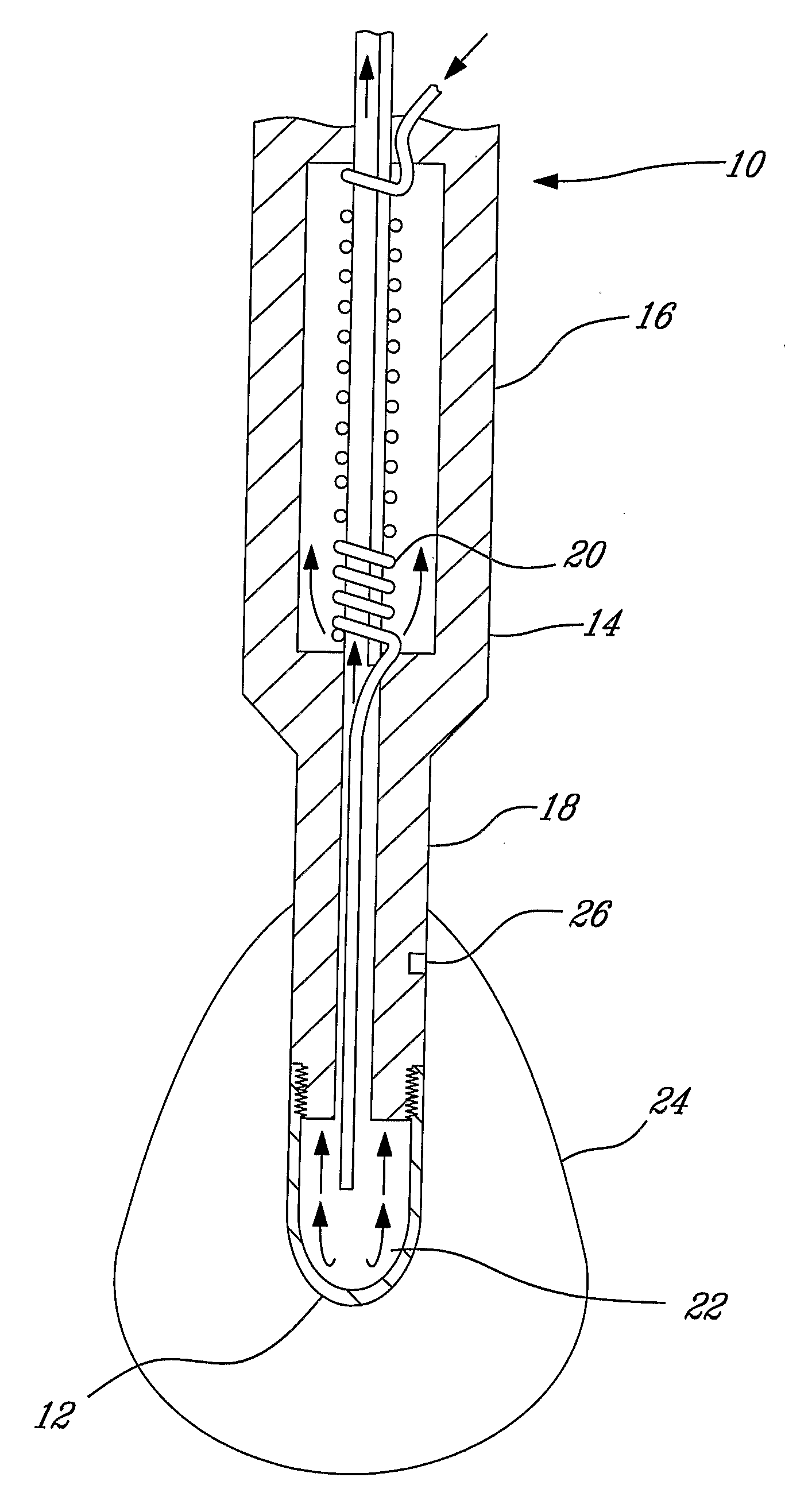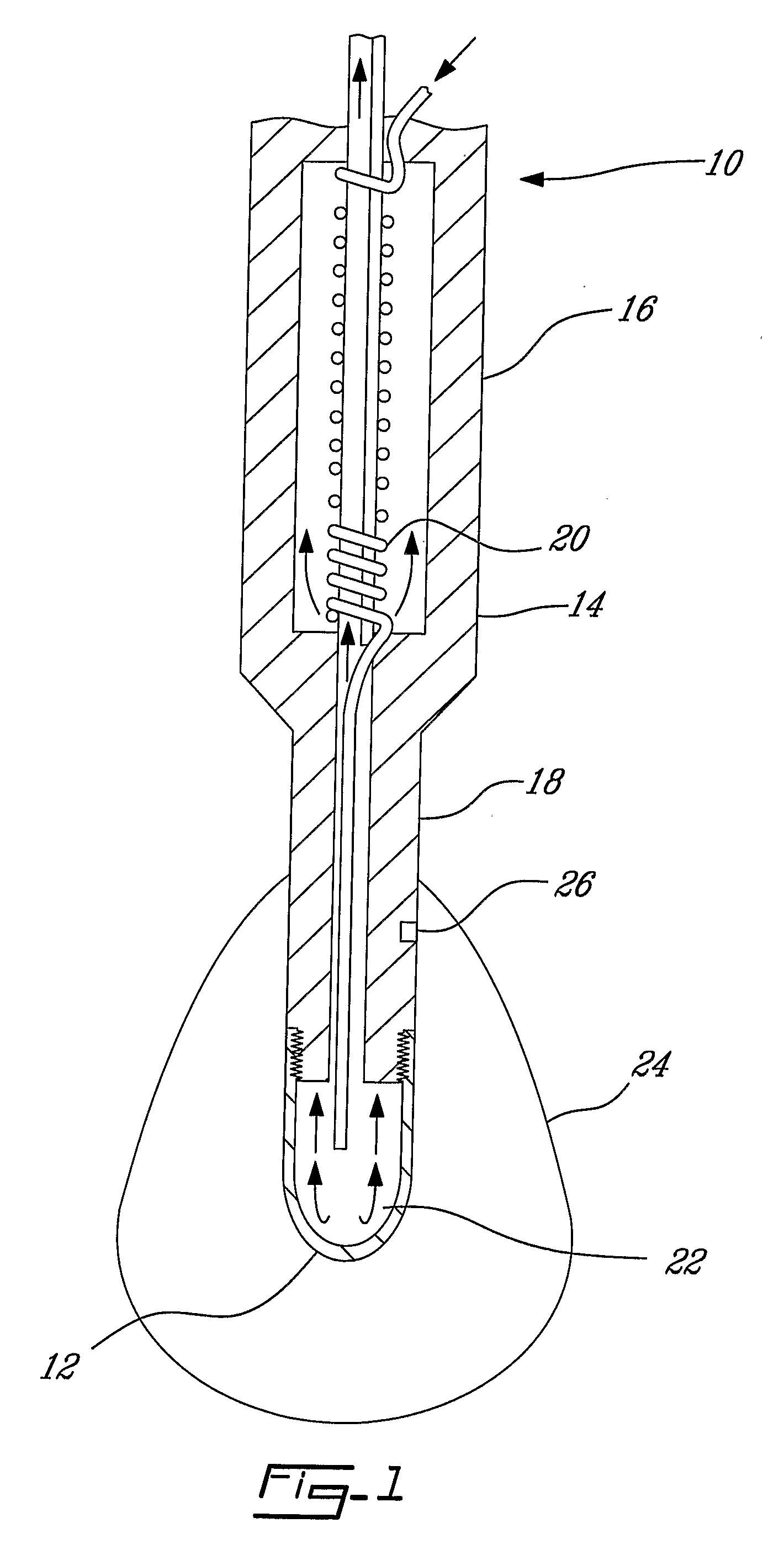Probe, sleeve, system, method and kit for performing percutaneous thermotherapy
- Summary
- Abstract
- Description
- Claims
- Application Information
AI Technical Summary
Benefits of technology
Problems solved by technology
Method used
Image
Examples
Embodiment Construction
[0043]The present invention may be used for thermotherapy, either by submitting a patient to heat or to cold. Because transmission of cold in a human body is more predictable than transmission of heat, cryotherapy is more often used. Hence, the present invention will now be described with respect to a cryoprobe used for cryosurgery.
[0044]FIG. 1 generally represents a cryoprobe 10. The cryoprobe 10 is fitted with a conductive portion 12, a body 14 that comprises a grabbing portion 16 for holding by a surgeon, and an insulating portion 18. The cryoprobe 10 is typically equipped with a Joule-Thomson cooler 20 for providing a high-pressure gas to a cooling chamber 22 inside the conductive portion 12. When a high-pressure cooling gas such as argon expands in cooling chamber 22, so as to form a cryogenic pool, it effectively cools the surface of conductive portion 12. The conductive portion 12 is made of a thermally conductive material such as stainless steel. The function of the conducti...
PUM
 Login to View More
Login to View More Abstract
Description
Claims
Application Information
 Login to View More
Login to View More - R&D
- Intellectual Property
- Life Sciences
- Materials
- Tech Scout
- Unparalleled Data Quality
- Higher Quality Content
- 60% Fewer Hallucinations
Browse by: Latest US Patents, China's latest patents, Technical Efficacy Thesaurus, Application Domain, Technology Topic, Popular Technical Reports.
© 2025 PatSnap. All rights reserved.Legal|Privacy policy|Modern Slavery Act Transparency Statement|Sitemap|About US| Contact US: help@patsnap.com



